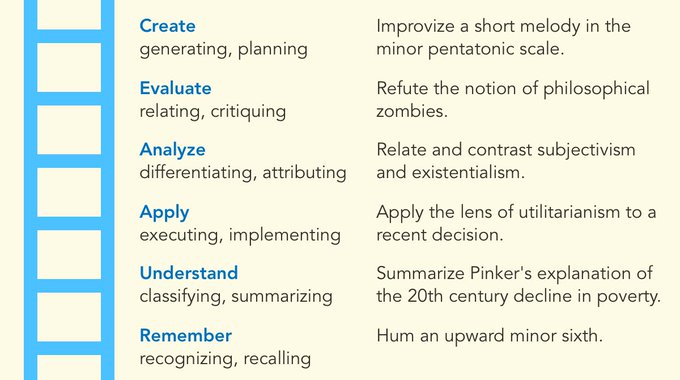Andyʼs working notes
About these notesSpaced repetition memory system
A spaced-repetition memory system combines the Testing effect and the Spacing effect to enable efficient memorization of many thousands of facts (Spaced repetition memory systems are extremely efficient). Some people also use them for a broader set of tasks (see below). Spaced repetition memory systems make memory a choice, but they’re not just for rote facts: Spaced repetition memory systems can be used to develop conceptual understanding.
The first consumer system of this kind was Supermemo, created by Piotr Wozniak. It adopted and popularized the term “spaced repetition”; prior literature had used a variety of terms (often referring to more specific facets of the underlying phenomenon).
- Related systems and possibilities:
- Differences in my approach to spaced repetition systems
- Implementations:
- Traditional: Supermemo, Mnemosyne, Anki
- Unusual variations:
- Unusual applications of spaced repetition memory systems
- Spaced repetition systems can be used to program attention
- Spaced repetition systems as catechism
- Spaced repetition memory systems can be used to prompt application, synthesis, and creation
- Prefer “memory system” to “spaced repetition system”; Perhaps “practice systems”, not “memory systems”
- On properties of memory systems:
- What’s the maximum intake rate of an efficient spaced repetition memory system?
- Optimizing spaced repetition system schedules
- Self-grading vs. machine-grading in spaced repetition memory systems
- To what extent does spaced repetition memory system practice constitute deliberate practice?
- SRS retry mechanism
- Barriers to adoption
- Many people view memory as unimportant to deep creative work
- Writing good spaced repetition memory prompts is hard
- Important attributes of good spaced repetition memory prompts
- Studying another person’s spaced repetition memory prompts is usually ineffective
- The limiting factor in spaced repetition system capacity is writing enough good prompts
- Using machine learning to generate good spaced repetition prompts from explanatory text
- The critical thing to optimize in spaced repetition memory systems is emotional connection to the review session and its contents
- Memory system practice sessions are too disconnected from activities you actually care about
- Regular spaced repetition memory practice is an onerous habit to adopt
- Spaced repetition review sessions often become boring and detached without a steady stream of new prompts
- The dominant culture around spaced repetition memory systems is fixated on meaningless goals
- Responses to common objections
- SRS are only relevant for rote learning of facts: “school learning”
- People underrate the importance of memory because of bad experiences with rote memorization in school
- Existing SRS are almost exclusively used for simple declarative knowledge, contra Spaced repetition memory systems can be used to develop conceptual understanding
- Memory systems help you focus on deeper engagement by automating away rote memorization
- Memory augmentation can accelerate the unpleasant early stages of learning a subject
- (caveat: it’s hard to write prompts for conceptual understanding!)
- SRS are only for material you don’t care about enough to remember “naturally.” Better to “learn by doing.”
- External memory aids are sufficient
- Mnemonic techniques obviate SRS
- Knowledge learned through SRS doesn’t transfer
- The real value in SRS comes from making one’s own prompts
- Maybe! How important is it to write your own spaced repetition memory prompts?
- On algorithms
- Adoption stories
References
Branwen, G. (2009). Spaced Repetition for Efficient Learning. Retrieved December 16, 2019, from https://www.gwern.net/Spaced-repetition
Spaced repetition memory systems can be used to prompt application, synthesis, and creation
A Spaced repetition memory system like Anki is primarily designed to help people memorize a lot of declarative knowledge, like vocabulary. But the same mechanisms can be used to create relatively unorthodox cards which prompt application, synthesis, and creation.

One limit to these types of questions is that because you authored them, you have to leave the context relatively vague: “apply the lens of utilitarianism to a recent decision,” rather than “apply the lens of utilitarianism to the death penalty.” The latter question’s not very helpful if you wrote it: you would have already thought through the answer, so it’d really just be a memory prompt when you saw it again later. This limitation makes the idea described here promising: The mnemonic medium can help readers apply what they’ve learned through simple application prompts.
Related:
- Unusual applications of spaced repetition memory systems
- Spaced repetition may be a helpful tool to develop or change habits
- Spaced repetition systems can be used to program attention
References
Twitter post, 2018-03-11: https://twitter.com/andy_matuschak/status/973020621847187456
Conversation with Michael Nielsen, 2020-01-01